10 REASONS WHY WOMEN DON’T APPLY TO YOUR TECH ROLES
Home » 10 Reasons Why Women Don’t Apply for Your Tech Roles

10 REASONS WHY WOMEN DON'T APPLY TO YOUR TECH ROLES
Women make up just 26% of the tech workforce. Fixing this gender gap isn’t just about correcting societal imbalances; it’s also a missed opportunity to supercharge businesses and economies.
By the end of 2025, there will be just one woman for every 115 tech roles in the UK. Contrary to long-standing stereotypes though, girls consistently outperform boys during their school years across all subjects, including STEM. This year, Computing A Levels saw girls outperform boys, with 47.9% achieving A* – B grades compared to 43.9%, despite girls making up less than 15% of entrants.
So why does the tech industry still struggle to attract women? Having spent five years working with over 130 industry partners, we’re starting to get to the bottom of it.
Read below to find out why we think that women are still not applying to your tech roles.
1. YOU’RE LOOKING FOR FULL-STACK DEVELOPERS RATHER THAN BUILDING A FULL-STACK TEAM
In a survey of 98,850 respondents, nearly half (48%) claimed to be full-stack developers. However, when compared to the basic job requirements of a full-stack developer, only 44 individuals truly met the criteria.
This pursuit of full-stack talent has created a harmful cycle for both organisations and developers. Full-stack developers are often dubbed as “unicorns” or “rock stars”, fostering unrealistic self-expectations among technologists and demotivating those who doubt their full-stack prowess.
An analysis of 50 million job listings uncovered an intriguing pattern: roles seeking the “best and brightest,” “top-tier talent,” or “high performers” had an 11% slower recruitment process, deterring both men and women from applying. Conversely, positions emphasising learning and development over prior experience were twice as likely to attract female candidates.
The solution lies in full-stack teams that collectively possess the skills needed to design, build, deploy, and operate software throughout all development phases. Shifting to such teams allows organisations to reap the benefits of full-stack capabilities without the challenges of recruiting and nurturing elusive full-stack developers.
2. UNCONSCIOUS BIAS IMPACTS YOUR HIRING DECISIONS
Unconscious bias is not your fault – there, we said it! It is a natural and inherent aspect of human cognition and refers to the automatic, unintentional, and often subtle stereotypes that people hold toward certain groups or individuals based on characteristics such as race, gender, or age. These biases are typically formed as a result of societal and cultural influences, upbringing, personal experiences, and exposure to media and information.
When it comes to hiring, these biases can lead to unfair treatment and hinder the potential of qualified candidates. The good news? Being aware of unconscious bias in hiring practices is the first step towards eliminating it and ultimately attracting more women to apply to your tech roles.
3. YOUR DE&I COMMITMENT ISN’T VISIBLE
Women look for signs that the companies they’re applying to are genuinely promoting diversity beyond a tick-box exercise, so if you’re actively committing to diversity, make it visible.
- Promote your dedication on your company’s careers website and in your job descriptions. Use clear and inclusive language to convey that you actively welcome applicants from diverse backgrounds.
- Highlight the diversity initiatives you have in place. Provide concrete examples of programs or efforts that demonstrate your commitment to fostering a diverse workforce. This could include mentorship programs, affinity groups, or training sessions focused on bias awareness and inclusion.
- Showcase diversity in your leadership team. Women, in particular, look for evidence of gender diversity at the top levels of an organisation. If you have women in leadership roles, feature their profiles and achievements on your website and in promotional materials.
- Share your diversity metrics openly. Transparency about the current state of diversity within your organisation, as well as progress made over time, demonstrates a commitment to improvement.
4. NON-INCLUSIVE LANGUAGE IN JOB DESCRIPTIONS
The language used in job descriptions matters more than we might realise. The use of inherently masculine terms like “ambitious,” “assertive,” and “self-reliant” in job adverts can often deter women from applying. Thames Water, a water supplier in London and South England, used to see only 8% of applicants identify as women but, after removing words like “confident,” “competitive,” and “champion”, saw a sixfold increase in job applications from women.
Inclusive job descriptions serve as the foundation for attracting women to tech roles. By employing language that appeals to a diverse array of candidates and highlighting a commitment to diversity and inclusion, organisations send a clear signal that they value female applicants and are actively striving for a more equitable tech industry

5. JOB ADS DON’T INCLUDE SALARY RANGES
According to our community of women in technology, 56% would be more likely to apply to a role if the salary was listed. When it comes to applying for roles, visible salary ranges are 10% more critical for women than for men.
Why is salary transparency such a game-changer for women? When an employer openly shares salary ranges, it’s a clear signal of their commitment to fair pay practices.
In an industry where pay disparities have been a long-standing issue, providing salary information upfront allows you to simplify your application processes and demonstrate your dedication to equitable compensation.
6. INFLEXIBLE WORKING POLICIES
Studies have shown that including flexibility in your job ads can lead to a 30% increase in the volume of applicants. Notably, it also drives up the number of female applicants as ”women are twice as likely to work flexibly compared to men – with women with children being the most likely to make use of flexible work arrangements.”
In a recent report in partnership with the Tech Talent Charter, we asked their 750 signatory organisations which flexible working policies work best for their employees. Some organisations champion the 4-day workweek or a seasonal shorter workweek during school holidays. In some cases, there’s even the option for uncapped holiday time.
Why are so many organisations championing flexible work policies? Well, not only does it help your employees avoid burnout, but a new study by the University of Birmingham found that 73% of managers think flexible working arrangements have contributed to an increase in productivity in their teams.

7. STRICT ESSENTIAL REQUIREMENTS
According to Harvard Business Review, men typically apply for a job when they meet 60% of the eligibility criteria, over women who will only apply if they meet 100%.
77% of our community of career switchers cited a lack of confidence as the biggest barrier to entering the tech sector. This lack of self-assurance can deter qualified women from pursuing tech roles, even when they have the necessary skills.
We have found that organisations are often flexible on eligibility criteria should they be presented with the right candidate at an interview. Therefore, crafting job descriptions that focus on essential qualifications and skills, avoids unnecessary or overly stringent requirements and encourages a wider breadth of applicants to apply.
8. LACK OF FEMALE REPRESENTATION IN YOUR TECH TEAMS
One in three career switchers say that a lack of women role models in a company dissuades them from pursuing tech jobs. That stat more than doubles among those who identify as neurodiverse; for ethnic minorities, one in five find the lack of diversity in tech discouraging.
The absence of visible female role models not only discourages women from entering the tech industry but also perpetuates the cycle of underrepresentation. If you have women thriving within your tech roles, shout about them! And encourage women to advocate for themselves, putting themselves forward for opportunities within the business.

9. NO CLEAR CAREER PROGRESSION
81% of our career switchers indicated that they would have stayed in their roles if given the opportunity to upskill. Career progression and professional development opportunities are what women want. By highlighting this on your job specs you not only set the tone for self-learning and improvement on the job but likely attract more women to apply too.

10. YOUR EMPLOYEE BENEFITS AREN’T LISTED
Valuable for attracting candidates beyond a listed salary, making your employee benefits clear in your job descriptions is a great way to attract more women. It’ll set your organisation apart from your competitors, promote transparency and save time in addressing candidates’ questions upfront. Employee benefits preferences can vary widely among individuals, and there is no one-size-fits-all answer to what women want, however as listed above, flexible working, paid parental leave, childcare assistance and professional development are all benefits often cited as attractive to women.
So, there you have it! The next time you find your tech team is struggling to attract women tech talent, consider trying one of our top 10 recommendations for getting more applications in.
